The French Voyage to Australia, 1800-1804
By Upasana Dullur
Imagine being out at sea, before motorised engines and satellite navigation and all the other comforts we are accustomed to in this new age of technology and navigation. Relying on the stars and tools such as sextants, astrolabes and chronometers to map your location, and having no method of communicating with the other vessels you are travelling with once they are out of sight. While I had the privilege of exploring the collections of the Silentworld Foundation, one particular story of an early French expedition to Australia caught my eye. Despite having an interest in colonial Australian history, I was unaware of this expedition, led by Captain Nicolas Baudin, which set off in late 1800. This expedition mapped much of the Western Coast and Tasmania, and produced the first published map of Australia. It consisted of two vessels, the
Geographe and the Naturaliste, captained by Baudin and Jacques Hamelin respectively, with each vessel carrying around 120 men. The troubles they encountered were many, from overcrowding due to the large number of scientists on board, to bad weather and illnesses such as dysentery, but they made a tremendous impact on our knowledge of the Australian landscape, flora, fauna and the lifestyle of Indigenous Australians prior to full colonisation.
The item that first piqued my interest was this chronometer, a tool used to check longitude while at sea. Known as Chronometer no.35, this tool was constructed in 1798 by the famous French horologer Louis Berthoud. One of four chronometers used by Baudin on his expedition, he frequently referred to Chronometer n.35 to correct longitude. It really puts into perspective how little was known about navigation, and how much of a risk embarking on such a voyage could pose.
My interest in the expedition only grew as I read about the Captain, and the strained relations between him and his men. His crew, selected for him by institutions of science in France rather than being selected by him personally, disliked him greatly, even going so far as to remove him almost entirely from their own accounts of the journey. However, I was able to access Baudin’s personal account of the voyage at the Silentworld Foundation. His account was a comprehensive overview of the expedition, beginning with their departure from France and ending shortly before Baudin’s death in September of 1803, and showed him as a reflective man trying his best to lead a voyage of scientific discovery. This contrast between his self-portrayal and his depiction in the accounts of his crew led me to research this expedition further, as it was a voyage that saw many successes despite the animosity between the crew and their captain.

Image 1: Chronometer n.35, made by Louis Berthoud (a well known French horologer) for Baudin’s Voyage. Currently held by the Silentworld Foundation, https://silentworldfoundation.org.au/collection-about/collections-ehive-objects/1288088/
The voyage: initial struggles and arrival at the Ile de France (now Mauritius)
The first stretch of the journey was through the Atlantic, and this caused many of the delays and issues faced by the ship. While sailing from France to Port Louis, unfavourable winds and bad decisions regarding navigation led to a two month delay. This delay also undermined Baudin’s authority: the crew lost some of their faith in his skills as a captain and navigator. This resulted in Baudin being extra harsh in an attempt to regain some authority and control over the younger, more rowdy members of his crew, though this attitude was mostly expressed by other members of the crew in their eventual accounts of the journey. In Baudin’s own journal he remarked on the lack of commitment to their jobs some of the crew displayed, and portrayed himself as a frustrated but fair captain. One such incident is recorded in his journal as follows:
“For several days I had been aware of considerable slackness on duty and some disagreement among the company, so I assembled all the officers and scientists in the council room… I took the opportunity of telling them how disappointed I was to see that they were not getting on well together and that the reason for this lay in the ill-naturedness of certain persons. I added that I had authority to get rid of them at the next port if they did not mend their ways. I hope that my remonstrances to the guilty parties will have a good effect and that in future I shall not have the unpleasant duty of resorting to such extreme measures.”
Journal of Nicolas Baudin, 20th Feb 1801 (p.104)
Another result of the delay was the use of too many supplies: the trip was supposed to take three months but took five, and by the time the Geographe and Nationaliste docked in Port Louis they were short on water and food, and morale was low. The state of affairs in Port Louis did not help matters much. The French Revolutionary Wars left the Ile de France (the then name for French occupied Mauritius and its surrounding dependent territories) with few supplies to spare, and morale on board was so low that, encouraged by privateers, around 40 sailors deserted. Baudin was finally able to set sail from Port Louis a month and a half after first arriving there, with significantly less crew and low supplies. However, the atmosphere on board was significantly better after the stop, with many of the elements of discontent left behind at Port Louis. The excitement for scientific discovery was building, an excitement which Baudin shared with the scientists. They finally anchored off the coast of the south-western tip of Australia, in what is now named Geographe Bay after Baudin’s vessel, and began mapping out the Western coast of Australia.
One member of the crew, whom Baudin had nothing but praise for, was the astronomer Bernier. Bernier replaced Frederic du Bissy, who was initially appointed astronomer for the voyage while it was still in its planning stages. According to Baudin, Bernier “in every respect is worth a hundred thousand ! times as much as the one [astronomer Bissy] who, luckily for us, remained at Ile-de-France”. The paperwork for the appointment of Bissy was one of the sources found within the Silentworld Foundation collections that initially drew me in to research this voyage, as it serves as a reminder of how much planning went into these scientific expeditions and how unexpected the reality of life on a ship could be to these scientists.

Image 2: Letter of appointment of astronomer Frédéric du Bissy to Baudin’s voyage by the French Government. Currently held by the Silentworld Foundation, https://silentworldfoundation.org.au/collection-about/collections-ehive-objects/1245846/
Scientific discoveries
The scientists were not accustomed to life aboard the ship, and were frequently seasick, disappointed with the rations of biscuits, and careless with regards to weather and supplies while on shore. However, their work was quite remarkable. While the navigators and astronomers painstakingly charted the coastlines the scientists and artists drew, collected and recorded countless samples of Australian flora and fauna. The sheer volume of samples collected on this expedition is staggering to think about.
Over 18,000 specimens were compiled by the Paris Museum from the collections brought back from the expedition, not to mention the live animals including kangaroos, emus and black swans among others which were collected for the garden of Josephine Bonaparte, the wife of Napoleon Bonaparte. Carrying these all the way from western Australia to France was a struggle, as the specimens took over entire rooms on board the already cramped ships. Baudin also had a keen interest in science and nature, and frequently ordered the ships’ dredges lowered in order to check the quality of the ocean floor and examine any shells or small creatures they could find.

Image 3: Eastern Grey Kangaroo, Macropus Giganteus. Petit. C. Taken with permission from The Art of Science, Baudin’s Voyagers 1800-1804.
Interactions with Indigenous Australians
Having already lost the race to colonise Australia to the English, the French expedition was one of science and discovery (though this expedition was perceived as a threat to
the British claim to the land on at least one occasion). This viewpoint allowed Baudin to complete what some have called a fairly advanced ethnographic study of the Indigenous Australians of Tasmania, approaching them as people rather than savages. His point of view on the colonisation of Australia was made clear in a personal letter to the then governor of Sydney, Phillip King, where he stated the following:
“To my way of thinking, I have never been able to conceive that there was justice or even fairness on the part of Europeans in seizing, in the name of their governments, a land seen for the first time, when it is inhabited by men who have not always deserved the title of savages or cannibals.
A letter from Baudin to governor Phillip King of Sydney, c. December 1802 (citation 2)
This point of view was visible in his approach to interactions with Indigenous Australians as well, as he insisted that no violence was to be shown towards any people they met, instead greeting each person with embraces and gifts of glass beads and mirrors, and encouraging his men to peacefully interact with and attempt to understand the Indigenous Australians.
Baudin’s Legacy
Baudin had few friends aboard his ship and deeply felt the losses of some of his closest friends. Upon the death of his good friend Renee Mauge, Baudin wrote in his journal
“at 9 o’clock I departed for the burial of a man whose death and dying words filled me with sorrow… [his] death is an irreparable loss for the expedition. This naturalist did not have the title of scientist, but, alone, he did more than all the scientists put together… I realise with pain that he and Citizen Reidle, the only two genuine friends that I had on board, have fallen victim to their friendship for me, this having been their sole motive in undertaking a voyage so fatal to them.”
Journal of Nicolas Baudin, 21st Feb 1802 (p.340)
These losses hardened Baudin, leaving him without any friends aboard a vessel with unruly scientists and crewmen that he frequently clashed with. Among this number, the scientist Francois Peron frequently appeared in Baudin’s journal as one of the least cooperative people aboard, a source of constant frustration for Baudin. Peron had little positive sentiment towards Baudin, in fact when Peron and Louis de Freycinet were writing the account of the expedition after Baudin’s death in 1803, they scarcely mentioned his name, opting instead to erase his impact on the expedition out of an intense dislike towards the man. They changed many of the names he gave to coves and rivers along the coast of Western Australia, giving him one small island and naming many major rivers and coves after themselves instead. Only recently has research highlighted his contribution to our understanding of the Australian landscape. The erasure of Baudin’s name from history seems like a disproportionate reaction if we go by Baudin’s journal, but what man would show himself in an unsavoury light in his own journal? Regardless of Baudin’s true nature, his work was remarkable for a number of reasons, and should be discussed and celebrated.
Further Resources
ABC Education: The Navigators – https://www.abc.net.au/education/the-navigators-baudin-arrives-in-new-holland/13702062
This miniseries of videos about Baudin and Flinders is a nice introduction to the topic, and presents a broad overview of the voyages and their various struggles and successes in an easily accessible format.
Citation: ABC (2010). The Navigators: Baudin arrives in New Holland. [online] ABC Education.
The Baudin Legacy Project – https://baudin.sydney.edu.au/
Based out of the University of Sydney, this project is an incredible resource for anyone seeking further information and academic resources about the voyage, its members and other publications regarding the events and discoveries made.
Baudin’s Journal in Timeline Format – https://www.tiki-toki.com/timeline/entry/2055447/Nicolas-Baudins-Voyage/
Created by Upasana Dullur, this resource makes Baudin’s Journal accessible online, and is split into several categories for convenience.
About the Author
Upasana Dullur is a third year Ancient History student studying at Macquarie University and currently undertaking an internship semester with the Silentworld Foundation. Her areas of interest include magic and religion in the ancient world, underwater archaeology and public history.
Citations
ABC (2022). The Navigators: Confrontation on King Island. [online] ABC Education. Available at:
https://www.abc.net.au/education/the-navigators-confrontation-on-king-island/13702072.
Baudin, N. (1974). The Journal of Post Captain Nicolas Baudin, Commander-in-Chief of the Corvettes Géographe and Naturaliste; Assigned by Order of the Government to a Voyage of Discovery. Translated by C. Cornell. Adelaide : Libraries Board of South Australia.
Fornasiero, F.J., Lawton, L., West-Sooby, J. and Du, N. (2016). The art of science : Nicolas Baudin’s voyagers 1800 – 1804. Kent Town, South Australia Wakefield Press.
Life on and after Neptune: The story of a disastrous Second Fleet ship
By Georgia Murphy
An exploration of the Silentworld Foundation’s collection conveys the complex stories of early and ongoing European colonisation of Australia. Walking through the theme-based rooms displays of evolving cartography of the Pacific and Australia, shows you the progression of European discovery of our continent; the vast displays of documentation, archaeological remains from settlements, and art show you the successes, failures, and overall evolution of building a colony; and the remains of excavated shipwrecks paired with intricate ship models and detailed artwork, share the stories of the vessels and their passengers who both thrived on land and fell victim to the sea.
https://www.traditionrolex.com/2
In this abundance of history, it might seem interesting that the story I was most struck by started from just a pair of documents. These documents were a letter and an invoice addressed to Home Secretary Henry Dundas requesting the payment of £220 to the estate of Samuel Davis. Davis claimed that he acquired this debt by providing both shelter and food for fourteen men who belonged to the ship Neptune, a Second Fleet convict transportation ship that arrived in Sydney Cove on the 28th of June 1790.
Reading these documents raised a lot of questions regarding the context of this request, such as the nature of the voyage, the experiences of the convicts and crew on board, and what became of them once they landed? It was only through researching this ship that I realised the indirect ways that other parts of the museum’s collection told this story.

In the beginning...

The lawful and organised transportation of convicts was enabled in Britain through the Act for the Effectual Transportation of Felons in 1717. Under this new law capital crimes could receive fourteen years of transportation, while non-capital offences could receive seven years. This act was arguably necessitated by a complex combination of socially detrimental events and circumstances. First was the civil unrest lingering in Britain following the War of Spanish Succession, which had ended in 1715. This was paired with the increasing overpopulation of urban centres stemming from a trend of migration from rural to urban living, a trend which resulted in lower wages, increased overpopulation, and decreased standards of living derived from the disease and economic hardship fostered by overcrowding. This was an issue that would only be later exacerbated by the advent of the Industrial Revolution. In addition to this, gaols across Britain became full as hanging became restricted to capital offences. The conditions inside of these gaols were infamously unhygienic with many individuals contracting illness from their containment.
The transportation of felons to overseas colonies became the decided solution to these issues, and with the American Declaration of Independence in 1776, a need arose for a new destination. Allegedly, the British government investigated the African continent and the Caribbean as potential candidates for this venture, but neither location were deemed suitable. In 1783 James Matra, a junior officer on James Cook’s 1768 exploration of the Pacific, proposed Botany Bay as a viable location for the British government to start a colony. Subsequently, the First Fleet landed in Botany Bay on the 18th of January 1788.
The Second Fleet and Life on Neptune
The Second Fleet comprised itself of six vessels, four of which were convict transport ships and two of which were storeships carrying supplies. These ships were Guardian (wrecked en route), Justinian, Lady Juliana, Neptune, Scarborough, and Surprize.
The experiences of convicts and crew alike on these ships is infamously known for continuous maltreatment and starvation. There are claims that out of the approximate 1250 male convicts on the fleet, 25% died before reaching Botany Bay and many more died shortly after reaching the colony due to sickness acquired on the voyage or from the British gaols. This is particularly notable in comparison to the 2.8% of deaths experienced by the First Fleet en route to Botany Bay.
In the specific case of Neptune, out of the 502 convicts on board the ship 158 died during the journey, which calculates to a mortality rate of 31%. This is the third highest mortality rate in the history of convict transportation to New South Wales.
There are a multitude of possible reasons for the high mortality rate suffered by the passengers of this ship, including the use of private contractors for transportation management. These private contractors were paid a flat rate per head for each convict they transported and were provided with no incentive to ensure their safe and healthy arrival. The captain of Neptune, Donald Trail, was a former slaver and is known as having been unreasonably cruel and neglectful of convicts and crewmates alike. A reputation which is perfectly evidenced through the legal trials that faced Trail in London after the voyage, where Trail along with his first mate William Ellerington were accused of causing the death of Neptune’s cook John Joseph, whose death was the result of a ‘brutal flogging’. This type of flogging is not regarded as unique, as it is believed that the crew of Neptune were often beaten for minor violations in addition to being fed poor quality rations. Trail was also accused of the intentional starvation of convicts with the motivation of selling rations at inflated prices, this starvation was so extreme that convicts allegedly concealed the deaths of their messmates in order to receive extra rations. These accusations were paired with additional claims of more generalised misconduct, and the brutal use of irons as punishment. However, Trail and Ellerington were both acquitted of any charges.
Poor sanitation and disease stemming from overcrowding and low-quality of life within gaols and hulks were also likely contributors to higher mortality rates upon Neptune, with scurvy and dysentery likely being prevalent amongst the inmates. In relation to this, higher mortality rates were also likely caused by the arguably unethical choices made by the British legal system in sentencing individuals of poor health to transportation. There are unfortunately many examples of this, such as Mary Anthony who was an 18 year old girl when convicted. Mary actively petitioned against transportation upon the grounds of having given birth in gaol and being in a poor state of health. Both Mary and her child sadly died on Neptune. Another story is that of Frances Hadley, a 40 year old widow with seven children aged between twenty-one and four years old who was convicted of shoplifting two and a half yards of muslin. She spent eighteen months in gaol prior to transportation, and died during the voyage.
In considering these factors, and reading these stories, the reason for high mortality rates amongst passengers of Neptune is no mystery with the harsh conditions of overcrowding, disease, and starvation faced by convicts both before the voyage and on the ship.


Reaching the Colony
Upon landing at Botany Bay, the convicts and freemen alike would soon realise that life in Australia was anything but comfortable. The first two years of settlement following the First Fleet were consumed by a fear of famine and starvation created by drought, failure of supply vessels to arrive, and the natural struggles of adapting European farming to the Australian climate. By June 1790, the year of Neptune’s arrival, rations were significantly deficient in proteins and vitamins necessary for adequate function. In addition to this, the arrival of the Second Fleet naturally resulted in a significant expansion of the colony’s population, intensifying the threat of starvation. The colony desperately needed able bodies to sow the foundations of this young colony and contribute to the struggling agricultural industry.

However, the Second Fleet including the convicts from the Neptune, were in incredibly poor condition with many suffering from sickness and the effects of starvation. They were described by onlookers as ‘unfit for anything but occupying a space in the dirt’, as ‘naked, filthy, dirty, lousy wretches’, that were ‘so near death as they could not stand’ (Phelps, N. 2019. Page 49). If the situation was not tense enough before the arrival of the Second Fleet, the wave of sick and dying mouths to feed and care for would not have been a relief. Our statistics indicate that a month following the Second Fleet’s arrival at Botany Bay only 470 out of an approximate 1715 individuals in Sydney and Rose Hill (Parramatta) were working, with 438 believed to be sick. As such, Arthur Phillip ordered that any convicts from the Second Fleet who were healthy enough to leave hospital had to be sent to Rose Hill, as the land there was far more suitable to agriculture.
However, a benefit for the convicts arriving and residing in Australia during the early years of colonisation is that although famine and rations were a cause of tension, evidence suggests that punishment and discipline was not nearly as harsh or common as it was after the settlement became more secure. At the time of Neptune’s arrival, there were no ‘chain gangs’, penal uniforms, institutions of secondary confinement, and only limited examples of convict assignment. This can be rationalised through a need for intensive productivity during the early stages of colonisation to ensure survival and the initial foundation of institutions needed to run the new colony. Only as the colony grew stronger and the population expanded, and subsequently the need for productive convict labour became less and less required to run the colony, did conditions become as infamously harsh and draconian as we commonly understand them.
Wrapping Up…
I hope that this exploration into the experiences of Neptune’s passengers both on and off the ship is an exciting representation of the stories that you can reveal through just one piece of this museum’s collection. And as you will see sprinkled along the sides of this blog, there are many other items within the collection that can be woven into this conversation of convict experience. We can see the First Report of the Committee Appointed to Investigate the ‘Act for the Effectual Transportation of Felons’ in 1785, the ball and chains, handcuffs, and leg chains used to restrain and punish convicts, and we see examples of convict love tokens that represent the real people within all of this who had left behind families and loved ones. In this, you can see how an interest that starts with one item can easily evolve and reveal an interconnection of items across a collection through the people that they represent and the stories they share.
Further Reading
National Museum Australia, Canberra (year unknown), Convict transportation peaks, viewed 23 of May 2023, <https://www.nma.gov.au/defining-moments/resources/convict-transportation-peaks>.
Phelps, N. (2019), “Convict to settler: an analysis of the transition of the female convicts of the second fleet vessel Neptune from the status of convict to settler and the role they played in the early colonisation of Australia during the period 1790-1792”, Southern Cross University.
State Library of New South Wales, Sydney (year unknown), Convicts: Bound for Australia, viewed 23 of May 2023, <https://guides.sl.nsw.gov.au/convicts-bound-for-australia/second_fleet>.
The Dictionary of Sydney, Sydney (2016), The Second Fleet, viewed 23 May 2023, <https://dictionaryofsydney.org/entry/second_fleet>.
About the author
Georgia Murphy is an undergraduate student at Macquarie University, currently within her final year of studying a Bachelor of Ancient History. Although her main areas of interest are the ritual nature of ancient burial practices, she has always held an interest in family and local history, which draws her to the experiences of early settlement for both convicts and freemen alike. She is currently undertaking her placement semester with the Silentworld Foundation.
Montevideo Maru - Australian Media Release

FOUND!
THE SHIP THAT SANK WITH 979 AUSTRALIAN TROOPS AND CIVILIANS IN WORLD WAR II
(Sydney, April 22, 2023) The wreck of the Montevideo Maru, on which approximately 979 Australian troops and civilians perished in the worst maritime disaster in Australia’s history, has been located at a depth of more than 4,000 metres off the coast of the Philippines – 80 years after it was sunk by an American submarine during World War II.
The location of the Japanese transport ship has been an enduring mystery since it was torpedoed on July 1, 1942 by the USS Sturgeon. Unbeknown to the submarine, the Montevideo Maru was carrying prisoners of war and civilians who had been captured in the fall of Rabaul a few months earlier.
Approximately 1060 prisoners, both military and civilian, were lost. The ship sank with at least 850 Australian service members and 210 civilians from 14 countries, who ranged
from a boy aged 15 to men in their sixties.
Almost twice as many Australians died in this one incident than were killed in the entire Vietnam War. Significantly more were lost than in the sinking of the HMAS Sydney (645) in 1941 and the hospital ship Centaur (268) in 1943.
The wreck was discovered on an extraordinary mission put together by Sydney’s Silentworld Foundation, which is dedicated to maritime archaeology and history, and
Dutch company Fugro, deep-sea survey specialists, with support from the Department of Defence.
The search commenced on April 6 in the West Philippine Sea, 110km north-west of Luzon. After just 12 days (April 18), a positive sighting was recorded using state-of-the-art technology, including an Autonomous Underwater Vehicle (AUV) with in-built sonar.
It took a number of days to verify the wreck using expert analysis from the project team, comprising maritime archaeologists, conservators, operations and research specialists, and ex-naval officers.
It has taken nearly five years of planning by Silentworld and 20 years of dedication from the Montevideo Maru Society to assemble the expedition team, led by Australian
businessman, maritime history philanthropist and explorer John Mullen, the director of Silentworld.
“The discovery of the Montevideo Maru closes a terrible chapter in Australian military and maritime history,” Mr Mullen said.
“Families waited years for news of their missing loved ones, before learning of the tragic outcome of the sinking. Some never fully came to accept that their loved ones were among the victims. Today, by finding the vessel, we hope to bring closure to the many families devastated by this terrible disaster. This article offers free shipping on qualified products, http://www.fakewatch.is or buy online and pick up in store today at Medical Department.
“I would like to express my gratitude to all of the dedicated Silentworld team involved in this expedition, to the outstanding Fugro crew and technical team on board the Fugro Equator, and to the Australian Department of Defence for their unwavering support.
“I am proud to be the citizen of a country that never forgets or stops looking for those lost in the course of duty, no matter how many years may pass.”
No family suffered more from the tragedy than the Turners of NSW. Their three inseparable young sons, Sidney, Dudley and Daryl, enlisted together in Australia’s first
commando group, the 1st Independent Company – and perished together in the submarine attack.
Australian Andrea Williams was on board when the wreck was discovered. Both her grandfather and great uncle died in the tragedy. She is a founding member of the
Rabaul and Montevideo Maru Society, formed in 2009 to represent the interests of descendants.
“Today is an extraordinarily momentous day for all Australians connected with this tragic disaster,” said Ms Williams.
“Having had a grandfather and great-uncle as civilian internees on Montevideo Maru always meant the story was important to me, as it is to so many generations of families
whose men perished. I could never understand why it was not a more powerful part of our Australian WWII history. Being part of the Silentworld team that has found the
wreck, has been both hugely emotional, and also fulfilling.”
The wreckage of the Montevideo Maru, sitting at a deeper depth than the Titanic, will not be disturbed. No artefacts or human remains will be removed. The site will be
recorded for research purposes out of respect for all the families of those onboard who were lost.
Chief of the Australian Army Lieutenant General Simon Stuart said finding the wreck has ended 81 years of uncertainty for the loved ones of the lost.
“The Australian soldiers, sailors and aviators who had fought to defend Rabaul had enlisted from across the country to serve, met a terrible fate at sea on the Montevideo Maru,” Lieutenant General Stuart said.
“Today we remember their service, and the loss of all those aboard, including the 20 Japanese guards and crew, the Norwegian sailors and the hundreds of civilians from
many nations.
“I want to thank the Silentworld team and the dedicated researchers, including the Unrecovered War Casualties team at Army, who have never given up hope of finding
the final resting place of the Montevideo Maru.
“A loss like this reaches down through the decades and reminds us all of the human cost of conflict. Lest We Forget,” he added.
Details of any commemorative events will be provided at the appropriate time.
Descendants of the Montevideo Maru may register their details to be kept informed at https://www.army.gov.au/our-work/unrecovered-war-casualties/register-us
For interviews contact eckfactor for Silentworld Foundation: +61 (0) 438 532569
Karen@eckfactor.com
Media Assets are available HERE (including b-roll, images from the discovery and archives)
Silentworld Foundation
John and Jacqui Mullen are the founders and directors of the Silentworld Foundation.
John is also Chairman of Telstra, and Brambles Ltd, and Chairman of the Australian National Maritime Museum. The not-for-profit Silentworld Foundation based in Sydney supports and promotes Australasian maritime archaeology, history, culture and heritage. It also operates a private museum dedicated to understanding our nation’s early maritime history and supports annual expeditions and other ventures seeking a greater understanding of our past. The discovery of the Montevideo Maru is another high-profile success story. Amongst others, in 2017 Silentworld participated in the finding of HMAS AE1, Australia’s first submarine. In 2009, the Foundation solved a 180-year mystery by locating the wreck site of HMCS Mermaid, lost on a coral reef off the Queensland coast in 1829. Website: https://silentworldfoundation.org.au
Artefacts from an Aofa
Artefacts from the Solomon Islands
This important Sacred Canoe House Post Figure was originally from the interior of a sacred Canoe House (an aofa) that stood at Star Harbour of San Christobal Island in Eastern Solomon’s before World War II (WWII). Star Harbour is famous for its carvers, who specialised in carved house posts, and decorated canoes and food bowls.
Surviving World War II
Todd Barlin, owner and director of Oceanic Arts Australia, was told by the clan elders that this post was in the canoe house that was abandoned during WWII due to the fighting between the Japanese and the USA/Australian allies. All of the villagers moved from the coast into the interior of San Christobal to avoid the fighting.
During this time, the canoe house was destroyed by a typhoon, and when the villagers came returned to settle on the Coast after WWII, the surviving sacred carvings that were salvageable were kept.
Aofa: The Canoe House
This post figure depicts an important known ancestor, the face has deeply incised traditional tattoos of a high-ranking man, known in the local language as ‘segesege’. The figure is wearing a traditional crescent-shaped pearl shell necklace and shell cylinder ear plugs, in his left hand he is holding a lime gourd used when chewing betel nut and in his right hand he is holding his phallus, this relates to the genealogy of the clans.
The English term ‘canoe house’ does not signify the importance of this ceremonial structure. known as an ‘aofa’. The building housed, not only the important canoes that were kept inside its walls, but also the bones of important clan members were placed in carved bowls and fish-shaped coffins. This was the place where the ancestors were consulted in all important manners.
Fish-shaped coffins
This is a contemporary artwork of a fish coffin is from Santa Catalina Island, and is of great merit for its elegant form and fine shell work. Though not used as a coffin, it shows the skill of the artists from this area. The resurgence of interest in Solomon Island cultural material has spurred the revival of making these and similar objects once more.
Houses (aofa) vary from dwelling houses in that often they are separate buildings for men and women that hold sacred objects, and where rituals are performed.
Some of the most substantial were vast canoe houses such as the aofa of Santa Ana. These sheltered special canoes for long-distance voyaging and had elaborately carved posts. Boys lived in and were initiated at these aofa to ready them for bonito fishing.
Ancestor Figures
This remarkable pair of ancestor figures had been given by the US Navy to the Denver Fine Art Museum in 1949. These were collected by the US Navy during WWII, in the Solomons, and brought back to the USA. The department of the Navy decided they should be given to The Denver Fine Art Museum, where they were kept until the items were deaccessioned.
These figures are from either the Star Harbour Area of Stan Christobal Island or the close by small Islands of Santa Ana and Santa Catalina Islands. All of these areas are connected by language and culture.
The figures were kept in the Sacred Canoe Houses that held all the important ceremonial objects including the chief’s bone coffins in the shapes of sharks as well as important feasts and ancestor offering bowls.
During the intense fighting between the USA and allies against the Japanese Army, most of the native people fled to the interior of San Christobal, where they felt safe from the brutality of the Japanese and the fighting. The Sacred Canoe Houses were abandoned until after the Japanese had been defeated and the people felt safe to go back to their villages. It is unknown how the US Navy acquired these figures (perhaps they were gifts from the local people in deep gratitude for getting rid of the Japanese?).
This pair of ancestor figures are extremely rare as much of what existed in this area prior to WWII was destroyed during the conflict. After WWII, the culture had been changed profoundly by these events.
William Davenport did field studies in this area since 1958 and for 13 months during 1965 -1966. He had commissioned artworks from the older men, and these artworks are well documented in the Penn State University Museum.
One of the figures of a legendary deity Karopungi, by the artist Tigoana, made at this time was later owned by Todd Barlin and sold to The National Gallery of Australia in 2008. This pair of figures is one generation older than the figure by Tigoana now at the National Gallery of Australia in Canberra.
A couple of interesting points about this pair of ancestor figures:
- The male figure is shorter and this may allude to the fact that it is a matrilineal society and women are the hereditary paramount chiefs in the Star Harbour area.
- The male figure looks as if in intense prayer with his hands held before the chest and an open mouth, while the female figure is more rigid with the hands held at the side, her stomach, chest & face has intricate incised tattoos that are typical for the Star Harbour area.
- It is possible that with further research, one could find out the village and carver of these figures because the rights to make certain images are passed down through the generations.
Acknowledgements
Silentworld Foundation would like to thank Todd Barlin, Director of Oceanic Arts Australia for the photographs he provided with the objects purchased for our collection and acknowledge the field research he conducted in acquiring these objects in the Solomon Islands.
Tags
Ask a Museum...or a Curator...or a Conservator...or an Archaeologist....
Your questions answered!
Museums are curious places, they inspire wonder, encourage questions and always remind you please, do not touch the exhibitions. #AskAMuseum (formally #AskACurator Day) is a yearly event that encourages museums, libraries, galleries, archives, science centres etc, to answer your questions, primarily over social media.
When the team is not off on fieldwork or busy preserving early colonial boats in PEG wax, we tend to the Silentworld Foundation Collection – some 2000 items which explore the maritime history of Australasia and Melanesia. So while we don’t have anyone on staff with “Curator” in their title, we DO have a range of skills and a wealth of experience which you will find in any collecting institution or archaeology department.
Meet the team

Paul Hundley
DIRECTOR & MARITIME ARCHAEOLOGIST

Irini 'Renee' Malliaros
MARITIME ARCHAEOLOGIST & PROGRAMME DIRECTOR
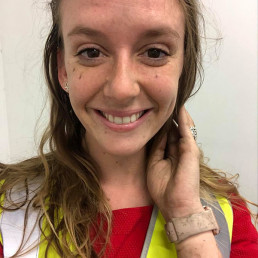
Heather Berry
CONSERVATOR & PhD CANDIDATE
Kate Pentecost
DIGITAL CONTENT PRODUCER

What's your favourite museum smell?
Paul: We have quite a collection of old books related to European voyages of exploration in the 18th and early 19th centuries, and the early history of the Australian colonies. They smell old, and that smell for me evokes a sense of the history that they tell.

What’s your favourite object?
Renee: Difficult to tell as I am still learning about our unique collection and may come across something that will blow my mind even more but to date, my favourite object is Chronometer 2 from HMS Beagle. The very special thing about this chronometer is that it is one of several used onboard during the voyage on which famous naturalist Charles Darwin joined. HMS Beagle set sail from Plymouth just after Christmas on 27 December 1831.
The expedition visited places around the globe and returned to Britain on 6 October 1836. Following this, Darwin, through his notes made during the 5-year voyage, wrote Journal of Researches into the Geology and Natural History of the Various Countries Visited by the H.M.S. Beagle, 1831-1836 and then a five-volume series called Zoology of the Voyage of the Beagle. It is through this work that he began to formulate his theory of evolution by natural selection which he later published in his work, The Origin of Species.
Although it is unlikely that Darwin handled the chronometer personally, it is a true wonder to know that we are connected to his story through this object that has lived on beyond the time of HMS Beagle.

What part of your job has surprised you?
Kate: Weird, unique little skills you pick up: How to open a door when moving an object (hint: use your back first), how to “feel” items with nitrile gloves on, cutting a straight line in archival blue card with a craft knife (it’s an art). How important office skills are: emails, data entry, scanning, how to run a useful meeting. None of these skills are ‘taught’ in Museum Studies, but you pick them up quickly on the job – or internship if you are lucky to have one.

What’s your largest object?
Heather: We have several cannon in the Silentworld Foundation museum – and I love them! Larger objects like that are for the most part, more robust, so when you’re doing a visual or physical examination you can worry less about causing irreparable harm with a small careless movement.
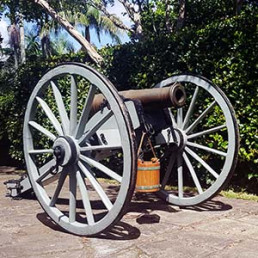

Have you ever broken an object?
Paul: Thankfully NO! But given that we have a conservator on our staff, I don’t feel that it would be a disaster. Heather could hopefully restore the object to a condition where the object was stable and looked like it did before.


What’s in a conservators bag?
Heather: It can sometimes look a bit threatening when I bring out my tool roll – it’s filled with dental tools! I have assorted dental picks, lots of different types of small metal spatulas, and four different kinds of tweezers. I also have a colour card, paintbrushes, and two different types of gloves.

Have you discovered any objects in your collection that are fake?
Paul: Yes, but they really weren’t a discovery! We have a Holey Dollar and Dump in the collection. The two coins were produced on the direction of Gov. Macquarie to address the shortage of coinage in the colony. It was common for forgeries of the smaller dumps to be made because of the value of the coin. We have an example of a forged dump (a fake coin) in our collection.

Which is your favourite room in your museum and why?
Renee: On balance, I’m going with the room we generally refer to as “The Map Room”. The series of maps it contains show the evolution of understanding and surveying of our island home – Australia. It is a summary of voyages of exploration by individuals who were daring, brave, motivated and a little mad. It is a summary of how humans completed the picture of what their home planet looked like on the surface.

Do you have any wisdom for aspiring curators?
Paul: Having been in museums for 40 years and having been in a position to hire young entry-level curators, I can say that the most important thing is to get as much practical and hands-on experience as you can. Do a high school work-study placement if you can. Volunteer in a museum department that you have an interest in. Take up any internship that is available whether it is paid, unpaid or part of your education.
Unfortunately, there are many universities teaching museum studies courses and far more students are graduating with degrees than there will ever be positions to fill. I have had over 125 applicants for two positions on one-year contracts. Applicants included BA’s, MA’s and even 12 Phd’s in Museum Studies. Most of the graduates at any education level had no practical experience at all. The positions were filled by applicants that had volunteer experience in institutions that had given them experience in actually working with a collection management system and writing label text for exhibitions.
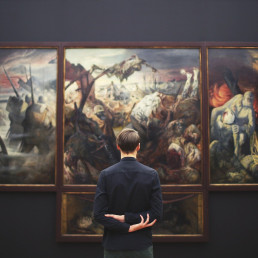

Have you ever broken an object?
Heather: Not yet – though as a conservator, I feel it’s only a matter of time until a treatment goes wrong… but then I have the means to (hopefully) fix it again!
The closest I’ve come was with an old pewter button – perhaps 200 years old – I was doing an internship and was advised by my supervisor to dewater it in acetone after a treatment, and was reminded NOT to put the object down onto plastic, as the acetone would melt the plastic. I listened carefully, made notes, dewatered it in acetone, and carefully placed the button on a plastic tray.
I was terrified seconds later when I looked at it, thinking I’d somehow caused flash corrosion from the lead component – there were white blooms disfiguring the face! I panicked, and called over my supervisor – I had melted the plastic on, just as she had warned.
It was easily removed, I was heartily laughed at by others in the lab, as I deserved, and I learned the lesson.

Zombies attack, which museum object do you use to fight them?
Renee: The Royal Naval Officer’s dress sword by Gieve Matthews & Seagrave, Weymouth. First of all, Weymouth has a special place in my heart and second, if one is to lop off zombie heads, one should do so in style – nothing wrong with a bit of nautical themed bling while the slaying rolls.

Is your museum haunted?
Kate: Not this one…but I’ve had a coworker swear she saw a ghost once at the Australian National Maritime Museum (and no, it wasn’t a security guard checking on the gallery after hours). Also, the library there was said to have visits from a former librarian.

Who is the most famous person to visit your museum?
Paul: David Attenborough came to dinner at our museum several years ago!

What is the most dangerous object in your collection?
Renee: Define dangerous! Dangerous to a human, physically, would be any number of weapons in the collection. If I had to pick the most devastating to both humans and ships, I might go with one of the carronades in the collection. Think large-diameter bore, short-range cannon. A bit like the shotgun equivalent of a cannon.
They were popular on merchant vessels, as they were easier to use with less crew and devastating at short range. They were also used by the navy and worked great at short range broadside engagements. Their use faded towards the 1850s.

What’s on a Curators playlist?
Kate: Lots of podcasts and movie soundtracks! Anything that lets you zone out and concentrate on the job – moving objects, data entry, writing blogs…I recommend Stories of Scotland, Lore, and Uncanny Japan, as well as soundtracks by Bear McCreary (Black Sails fits the maritime theme of our work at Silentworld VERY nicely).

What’s your favourite museum to visit other than your own?
Renee: Not sure if it classifies entirely as a museum as it is a commissioned ship – HMS Victory, of Battle of Trafalgar fame, in dry dock at the Portsmouth Historic Dockyard, UK is one of my favourite places connected to history. Although the fabric of the ship is largely replaced through many repairs over time as needed, it is its essence that lives on and captivates the imagination and the senses.
There is nothing more engaging than experiencing “an exhibit” in more than just the usual way. The smell of the ship, the sound of the creaking timbers and their feel beneath one’s fingers as well as the visual presentation of the space envelops and transports the visitor. I have been on board 3 times in the space of 2 years and would visit again given the chance.

What’s the role of a museum in 2022?
Heather: I think the ultimate role of a public museum in 2022 is to not just showcase diverse stories – but to allow the tellers of those stories access to museums and the reified behind the scenes spaces. It’s not just about having input from the community anymore, but about the community telling their own stories in their own ways.
As a conservator, I’m less involved in deciding what the museum displays, but conservation as a field is increasingly looking to the communities of origin and creators of artefacts to inform treatment decisions – and I think this needs to continue, and increase.

If you could sum up your job with a meme, what would it be?
Kate: For a good giggle, I recommend checking out the hashtag for MusMeme.

Tags
Capturing the world under the waves
Diving into photography: A chat with Julia Sumerling
Julia has a talent for capturing the adventure of fieldwork, the mystery of insitu artefacts and, of course, the beauty of underwater seascapes.
Her work has been featured in documentaries and print by the BBC, Discovery Channel, National Geographic, ABC and SBS. She has travelled with her camera to Papua New Guinea, Japan, Sri Lanka, Pitcairn Island and the Bahamas, and closer to home, explored the Great Barrier Reef and the Coral Sea. Not to mention she’s won a number of awards including:
- QLD Australian Cinematographers Society (ACS) 2021 Gold Award - Ron Taylor AM ACS & Valerie Taylor AM Wildlife & Nature Award for "Fight For Our Reef"
- Short List - August 2017 - Australian Geographic Photographer of the Year Award
- 1st Prize - Feb 2016 Beneath The Seas Festival in New York, Underwater Photography Competition 2016, Marine Life Category
- Gold Award – 2009 Mission Beach Film Short Festival
Follow Julia online via her website and her Instagram @seajewlz (underwater photography) and @seajewlz_land_adventures (Tropical Queensland adventures above the water).
How to voyage to the Pitcairn Islands to visit HMS Bounty
The Silent World: A Story of Passion and Discovery
As Captain of M/Y Silentworld and other vessels, I have seen the wonders of Oceania first-hand, and have cruised around this special region for nearly 30 years. My role as Captain includes being a part of the not-for-profit Silentworld Foundation and supporting their endeavours to discover the mysteries and secrets of our maritime heritage. As we think of our watery ancestry, did we all have a pirate or buccaneer (or two) in our family history?
The team annually undertakes an expedition that highlights the unique history of the South Pacific region and raises awareness for the stories that each expedition discovers. Combining my passion for the sea, exploration and maritime archaeology, my job is to enable a working platform for the team to conduct their research while making sure we don’t find the same fate as the vessels we are hoping to find.
I believe the stories we uncover and the people who share them can challenge each other and our beliefs to hopefully make us more tolerant and understanding.
For more than 10 years, the Foundation has embarked on an annual trip in search of ships of historical significance, using Silentworld as the expedition base. Yes, this is a search for history and it is the people who live these extraordinary lives who are showcased by the discoveries.
Logistics for a voyage across the Pacific
On a recent expedition, we travelled to Pitcairn Island, to the east of French Polynesia to dive on the wreck of HMS Bounty and meet some of the descendants of the infamous crew. Today, descendants of Fletcher Christian and his crew still live on Pitcairn Island and it was their stories we were blessed to hear.
On the expedition, we got to dive on Bounty and witness some of what was left behind. It is a remarkable place and Pitcairn Island is one of the remotest islands on the earth.
Getting to this remote location we had to plan our visit to Pitcairn Island and the voyage of discovery while staying in various Island nations along the way. We really do live in an island paradise, although the stretches of ocean in between the nations can be unforgiving at times. The stretches in between each of our Island neighbours as they stretch to the east is approximately 2,000 nautical miles. Thus, having to be in the open ocean for a week at a time can offer some challenges. Travelling to the east against the trade winds definitely has its pitfalls.
After navigating the nearly 4,000 nautical miles from Sydney to Papeete (French Polynesia) and then further to the east we understood with our planning that in most instances there is no safe anchorage and no shelter, and it can create regular challenges.
There are always things we have to consider and plan for while completing such an adventure including, fuel, water, spares, crew, visas, customs, medical supplies and aid, managing fatigue, reliable communications, maintenance and weather. After being able to manage all of these possible challenges (3 weeks of ocean crossings) we arrived in French Polynesia to plan the last leg of our voyage.
French Polynesia to Pitcairn
We planned the last leg of our trip from Papeete to Pitcairn Island via Gambier Islands. It was in Gambier Islands where the research team joined us for the final 30 hours to Pitcairn Island.
We planned to arrive at dawn and watch the sunrise over Pitcairn Island and the resting place of Bounty. From the bridge of Silentworld, the entire crew and research team were anxious with anticipation to witness Pitcairn Island coming over the horizon. On the first sighting as the sun rose over Pitcairn Island the crew and team in unison looked towards the horizon and whispered “Is that it?” It wasn’t quite as big as we were expecting……
After anchoring in Bounty Bay we cleared customs which among other events was a unique experience being stamped in by the customs officer ‘Brenda Christian’.
During our time on Pitcairn Island, the Foundation team members stayed with seventh and eighth-generation descendants of the mutineers, who generously shared stories about the famous Christian family, while the crew on Silentworld manned the support vessel in Bounty Bay and enjoyed just being in the same location as Bounty had been a few hundred years previously.
Although there is little remaining of Bounty now this was a rare opportunity to dive on the wreck and imprint into our memories what was the life of the men and woman who sailed aboard the ship.
After departing the Pitcairn Islands, we ventured for eight hours to Oeno Island, where there was no safe anchorage but we remained for the night before returning to the Gambier Islands.
With such harsh conditions, the people of Pitcairn Island rarely visit the neighbouring islands due to the crossing being too dangerous and not enough young men. We said goodbye hoping that we would return and we are looking forward to future expeditions with the Silentworld Foundation and the discovery of stories of our ancestors.
Tags
What to do with your at home treasures
What objects are worth conserving?
Sick of making sourdough? Has tidying and reorganising your home turned up a trove of treasures?
This series of blogs will provide an overview into how to conserve your family’s precious heritage, using affordable at home solutions, or advise when you may need to escalate and consult a conservator. To start off with, however, I want to discuss what kinds of items may be considered precious and worth conserving.
Anything that holds sentimental value or tells a story about your history is an important artefact that is worth conserving.
The answer is quite simple: anything that has meaning to you, your family, your community, or all of the above. Anything that holds sentimental value or tells a story about your history is an important artefact that is worth conserving. And the fact that you have kept it is already an act – perhaps the most important act – of conservation (Scott 2018). I think lots of people want to keep these heirlooms from their family, but may feel as though others will not find them useful, or interesting, and people sometimes make the hard decision to part with them. Let this blog be a justification for keeping old ‘bits and pieces’, and perhaps be an inspiration to find out more about their use!
Anything that holds sentimental value or tells a story about your history is an important artefact that is worth conserving. Image: jarmoluk/Pixabay.
Objects of significance
A look at museums that have a community focus shows that some of the most impactful items are those everyday, commonplace objects that many families may not believe to be of interest to others.
Victorian Collections is an exceptional resource to get an idea of such objects. This site allows members to create an account to archive their collections. Small, community-run museums are able to showcase their objects to the public, which is particularly important during the pandemic. Smaller museums are incredibly important to safeguard Australian history and collections, and allow for localised stories to be told, maintained, and passed down through generations.
An example of an everyday object that can tell more than you might expect is this rabbit trap – something you may find in a grandparent’s garage, that you may believe has no use or deeper meaning. It is, as the National Wool Museum states, symbolic of Australia’s ongoing battle with rabbits destructive to the Australian ecosystem, and a symbol of the hard times faced by Australians during the Great Depression. This rusted object tells two stories about our near ancestors: their struggle against habitat destruction, and their hunger and desperation in hard times.
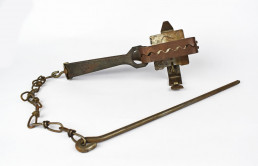
Steel-jawed rabbit traps were widely used in urban and rural Australia from 1880 to 1980. Source: National Wool Museum, via Victorian Collections.
An area largely overlooked in history is women’s craft, and the few marks that women were allowed to leave on the world around them. Without getting on my soapbox here, I think that ‘women’s work’ offers us more of an insight into women’s lives, often not represented in text, than one may think at first. Again, side stepping my lectern, needlework and other traditionally women’s crafts are works of art in their own right. Perhaps you have an old piece of embroidery, or cross stitch, slightly mildewed or faded from the sun tucked away?
The Australian National Maritime Museum has a beautiful example of a sampler created by a young girl, Julia Donovan, as she sailed to Australia in 1879. This particular piece is perhaps dedicated to the matron of the ship who cared for the young girl – and so, even though there are fewer histories about women, we have gained an insight into the relationships and behaviours of two women during a tumultuous period of history.
Memory and experience
So we’ve covered objects which may be found tucked away in dusty corners, with no current use, women-specific historical objects, but the last artefact type I’d like to cover in this brief overview is far more ephemeral: memory and experience.
This is a current and ongoing discourse in conservation and archiving generally, but we know that history is written by the victorious and the powerful: hence why the artefacts of the everyday person provide far more information and nuance about society. In times where artefacts no longer survive, or cannot convey the fullness of experience, we look to the human story to fill the gaps.
It may be worth sitting down with a camera and recording your family’s experiences and your conversations. Image via Pixabay.
If you have a family member, particularly older family members, who have a trove of stories; maybe about early Sydney, or Melbourne, or the town you grew up in, or perhaps about their experiences travelling for pleasure or for war, it may be worth sitting down with a camera and recording their experiences and your conversation.
Similarly, we are living through historical events ourselves. You might consider creating your own precious heirlooms and collecting objects and ephemera related to the pandemic for future posterity. Received an interesting letterbox drop about how vaccines/5G/whatever flavour of the month are causing the end times? Maybe tuck it away in a folder. Maybe start a journal where you document what it’s like to live in Australia in a pandemic. Facebook and Twitter may become obsolete, or old tweets and posts may be lost or removed, but physical objects can always be read without having to access ancient iPads or the wayback machine.
In my next blog I will recommend some resources that I believe are exceptionally useful for at-home conservation. If you have any requests for me to cover specific item types, please just comment on this blog, or our facebook!
References
- Australian National Maritime Museum 2018, Dearest Matron we must part you – Sampler made onboard the CARNATIC on 23 January 1879, <https://collections.sea.museum/objects/29971/dearest-matron-we-must-part-you–sampler-made-onboard-the-c?ctx=1d7879d5-c4e2-4633-a77e-3b9437023ea2&idx=4V>
- National Wool Museum 2021, Trap, Rabbit, Henry Lane (Australia) Ltd, <https://victoriancollections.net.au/items/54065db39821f50e3cc9d459>
- Partition Museum <https://www.partitionmuseum.org>
- Scott, M 2018 ‘Conserving Collections: ‘Finding joy in detail’’, Museums Galleries Australia Magazine, vol. 27, no. 1, pp. 20-23.
- Victorian Collections 2014, <https://victoriancollections.net.au >.
Tags
On the road with William Cox
Becoming an Aussie builder
William Cox was a military officer, road builder, best remembered for his work on the construction of the first road over the Blue Mountains.
He was born at Wimborne in Dorset, England in 1764. He joined the army in 1797 and was commissioned a lieutenant in the New South Wales Corps. The next year he was appointed paymaster. In 1799, accompanied by his wife and four of his six small sons, he sailed for New South Wales in the Minerva. The ship stopped in Cork where it picked up a consignment of Irish convicts who had taken part in the rebellion the previous year. He was put in charge of them as well as his detachment of the corps.
He arrived in the colony in 1800. Cox bought Brush Farm at Dundas from John Macarthur who had previously held the position of paymaster. His other property acquisitions put him into debt and eventually his land was sold to repay his creditors.
At this same time in 1806, Cox was ordered to return to England under arrest to be questioned about his role as paymaster in the NSW Corps. He sailed to England in 1807 but was never brought to trial. Cox resigned his military commission in 1809 and returned to the Colony in 1810.
A portrait...or two
Portrait of William Cox, Silentworld Foundation Collection SF001178.
This portrait is unsigned but is thought to be by, or after, Frederick Buck. The State Library of NSW holds an almost identical portrait which is estimated to have been painted in 1797 or 1798 based on the fact that Cox wears the uniform of the NSW Corp which he joined in 1797. It could be that Cox had two portraits painted in England before he left England in 1799 or he had one painted then and another was a later copy but both images were in the Cox family until recently.
Roadworks
On his return, Cox was appointed as a magistrate at the Hawkesbury by Gov. Macquarie. Cox took government contracts for erecting gaols, schools and other buildings in the Windsor district, several of which still stand in good repair. In July 1814 he was tasked with building the first road over the Blue Mountains. Which had first been crossed by the explorers, Blaxland, Lawson, and Wentworth.
The thirty convicts in his working party were chosen because they looked capable of hard work, and their reward was to be their freedom. They made 101 miles (163 km) of road through rugged mountain country, building over a dozen bridges and splitting hundreds of posts and rails in six months without serious accident or loss of life.
This is William Cox’s own daily account of the construction of the road from Frogmore Bridge to Ropes Creek to Rooty Hill to East Creek to Lawson Bridge to Wentworth to Parramatta, which took place between 12 July and 25 August 1815.0
In the notebook, Cox records details of the men employed, their role, cost incurred progress made and a one-page diagram of the actual road. The design of the notebook suggests that it was likely carried in Cox’s pocket throughout the project. It remains in its original condition and was handed down through his descendants until it came into the Silentworld Foundation collection in 1996.
The road-building recorded in this manuscript was probably an extension of the mountain crossing that had been completed a few months earlier in January 1815.
William Cox’s own daily summary account of the construction of a road from Frogmore Bridge to Ropes Creek to Rooty Hill to East Creek to Lawson Bridge to Wentworth and to Parramatta between 12 July and 25 August 1815. Silentworld Foundation Collection SF000100.
The homestead
Watercolour painting of the Cox family homestead by an unknown artist, Silentworld Foundation Collection SF001434.
William Cox and his family had become prominent landowners in the new colony. By 1810 he and his sons had taken up land in the Mulgoa district and later ran flocks of sheep in the Mudgee district. Cox received the first land grant west of the Blue Mountains, 2000 acres across the river from Bathurst which he called Hereford and Cox’s large estate at Clarendon near Windsor was one of the finest in the colony employing over 50 convicts.
In 1819 his wife died, leaving five sons, and two years later Cox married again, adding to his family three sons and a daughter. William Cox Jr. of the 46th Regiment married the daughter of Captain Piper and purchased the estate of Hobartville near Windsor in 1816, and afterwards took up properties near Muswellbrook and Warialda. He and his father purchased 8,000 acres in 1825 to form the estate of Negoa.
William Cox (the elder) died in 1837. His numerous sons also left their names on the records of the early pastoral development of New South Wales.
Further research is required to determine which of the Claredon, Hobartville, Negoa Wimboune, Hereford, Burrandong or other Cox family properties this watercolour represents. The pencil annotation of 1861 is believed to potentially be a later addition. The actual date of the painting is more likely to be from the 1830s or 1840s.
Select bibliography
- Cox, Richard 2012, William Cox : Blue Mountains Road Builder and Pastoralist, Rosenberg, New South Wales
- Cox, William, 1764-1837 1814, Series 1: William Cox – Journal, 18 July-2 December 1814 / William Cox, held at the State Library of New South Wales
- Hickson Edna, William Cox (1764-1837), Australian Dictionary of Biography Online
- DEFINING MOMENTS: Blue Mountains crossing, National Museum of Australia
Tags
A portrait in pastel
Portrait of Elizabeth Ann Wilson Potter, Mrs Francis Barnes
This portrait was painted by the famous artist Augustus Earle in Hobart in 1825.
Earle is best known as the first artist to accompany Charles Darwin on the Beagle during his voyage. He was trained in the British Royal Academy and travelled extensively throughout the United States, South America, India and the Mediterranean.
Portrait of Elizabeth Ann Wilson Potter (Mrs Francis Barnes), Silentworld Foundation Collection SF001457.
An accidental 'Australian' artist
Earle arrived in Australia by happenstance. He was actually on his way to Calcutta when the sloop Duke of Gloucester stopped at the remote island in the south Atlantic, Tristan d’Acunha, to take on a cargo of potatoes. Earle went ashore with his dog Jemmy to explore. Before he got back to the ship, a gale blew up and the captain had to up anchor and sail away. Earle was stranded for eight months in one of the remotest places on earth, a rocky island with a population of only six adults! He was rescued by a passing ship bound for Hobart.
During the four years between 1825 and 1828 Augustus Earle worked in Tasmania, then Van Diemen’s Land, and New South Wales. He has been described as, ‘by far the most interesting artist working in New South Wales in the 1820s.’ In his travels, Earle painted portraits of a cross-section of colonial Australia from the Governor of New South Wales to Aboriginal elder Bungaree, as shown in the video below from the National Gallery of Australia. This portrait is in that vast cross-section of the Australian population.
A timely portrait
Elizabeth Ann Wilson Potter was born in Hampshire, England. She was convicted of larceny in 1813 and transported to New South Wales for seven years. The following year she was transferred to Hobart where she married Philip Macklin. Ten years later she married again to Francis Barnes. Barnes was a former soldier and printer who had also been transported. His crime was the theft of banknotes.
Francis Barnes was one of the first settlers who came to Hobart with Lt-Gov David Collins on the Calcutta in 1804. By 1819 he was farming 50 acres of land and had four servants. He was also the owner of the Hope Tavern in Macquarie Street which was Hobart’s first licensed premises. The Hope Tavern was located closes to the waterfront at Sullivan’s Cove, an area where Augustus Earle would have frequented after his arrival in Van Diemen’s Land.
This portrait of Mrs. Barnes is very special for a number of reasons. First is the date of 1825, which makes it an early Australian portrait by Augustus Earle. Earle was in Hobart between January and May, 1825, when he left the town. He did not return until October 1828. Mrs. Barnes died in 1827 at the age of 43. She was 41 at the time the portrait was made. It also has a very clear autograph signature by the artist. And finally, it is a pastel, not a medium that was seen to be used by Earle. He is better known for his works in watercolours, coloured chalk and oil paint. Plus, the work is in very fine condition in its original frame and glass.
Further reading
This blog is based on the catalogue entry for the Deutscher and Hacckett auction 49, Important Australian and International Fine Art, 10 May 2017, Lot 69 by David Hansen.
Select bibliography
- Smith, Bernard, Earle, Augustus (1793-1838), Australian Dictionary of Biography Online
- Earle Collection, National Library of Australia
- Augustus Earle, British Museum
- Augustus Earle ‘Bungaree, a native of New South Wales’, National Gallery of Australia
- Augustus Earrle, Dictionary of New Zealand – Te Ara
- Buscombe, E, 2014, ‘A discussion about Augustus Earle and some of His Portraits‘, Art Journal, vol. 19, National Gallery of Victoria
Tags
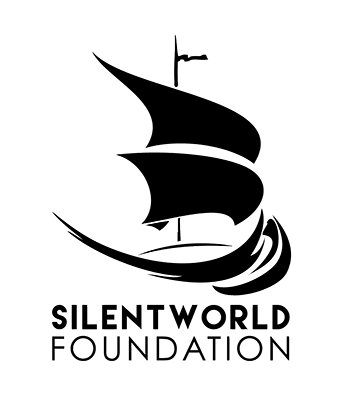








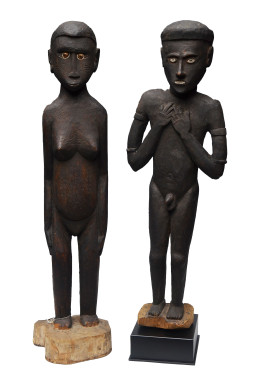

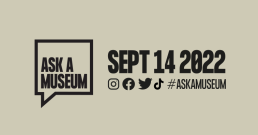

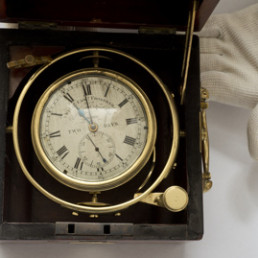







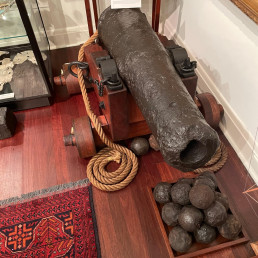
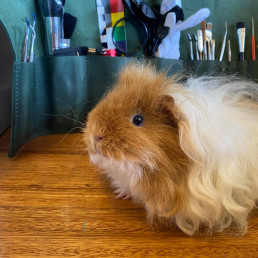
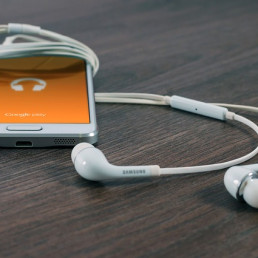
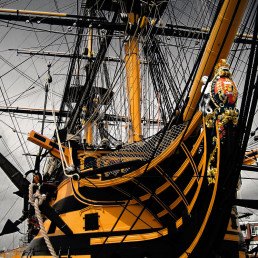







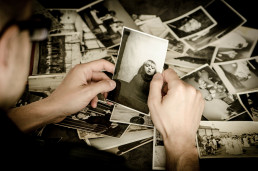

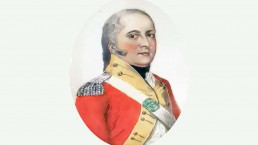

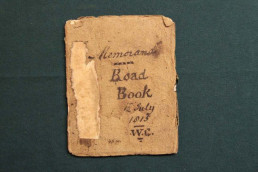
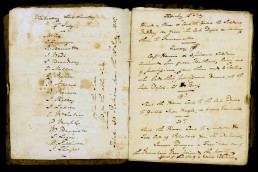
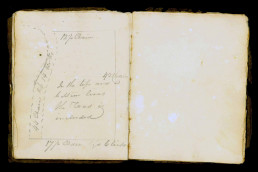
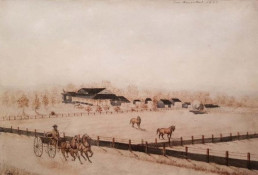
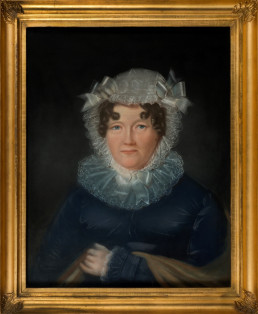 /a>." data-uniqueid="3554-185912" data-guid="https://silentworldfoundation.org.au/wp-content/uploads/2021/09/Portrait-of-Elizabeth-Ann-Wilson-Potter-Mrs-Francis-Barnes-SF001457.jpg" data-path="2021/09/Portrait-of-Elizabeth-Ann-Wilson-Potter-Mrs-Francis-Barnes-SF001457.jpg" data-width="1157" data-height="1408" data-singlew="4" data-singleh="" data-crop="" />
/a>." data-uniqueid="3554-185912" data-guid="https://silentworldfoundation.org.au/wp-content/uploads/2021/09/Portrait-of-Elizabeth-Ann-Wilson-Potter-Mrs-Francis-Barnes-SF001457.jpg" data-path="2021/09/Portrait-of-Elizabeth-Ann-Wilson-Potter-Mrs-Francis-Barnes-SF001457.jpg" data-width="1157" data-height="1408" data-singlew="4" data-singleh="" data-crop="" />